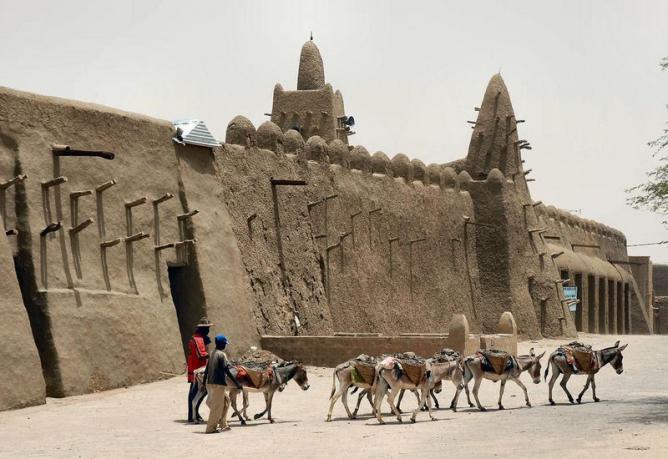Checkout Africa’s Top 10 Capitals of Islamic Culture
December 16, 2016

Every year, the Islamic Educational, Scientific and Cultural Organisation, or ISESCO, selects a city from Africa (as well as Asia and the Middle East) as an Islamic Cultural Capital. The nomination means that the heritage of each chosen city is protected, as well as giving people a chance to celebrate contemporary Islamic culture. Starting from the inaugural year of 2006, we explore what the African Capitals of Islamic Culture have to offer.

© Emilio Labrador/Flickr
Timbuktu – Republic of Mali (2006)
Timbuktu is absolutely essential in uncovering the written culture of Africa. It was once the intellectual capital of the continent, and a center of scholastic activity. In its golden age, around the 15-16th Century, Islamic intellectuals would flock to Timbuktu, viewing the area as a useful platform for them to propagate Islam throughout Africa. Today, one can imagine what it was like back then by admiring the prestigious Koranic Sankore University and the city’s impressive mosques, Djingareyber Sidi Yahia and Sankore. Sadly the Ahmed Baba Centre was set on fire by Islamist rebels, an action denounced by ISESCO, yet fortunately many of the historical medieval manuscripts were saved. There is also an active contemporary music scene, as exemplified by the Festival au Desert, normally held every year in Timbuktu, that shows the best in Tuareg music. Ultimately, Timbuktu still holds the key to discovering Africa’s intellectual history.
Dakar – Republic of Senegal (2007)
Whereas Timbuktu was once the bohemian Paris of West Africa, a cultural hub dominated by Islamic intellectuals, nowadays it’s Dakar that is often called the Paris of West Africa. Dakar, the capital of Senegal, is a fascinating and tolerant place as it is remarkably diverse, consisting of many different ethnic groups and religions. Surrounded by the Atlantic ocean, Dakar is a scenic area and is also full of culture. For example, the French institute of Senegal highlights the city’s cultural legacy, while the most important religious building in Dakar is the Grand Mosque, built in 1964. Furthermore, there is a now a new addition to the city’s landscape, the African Renaissance monument. Costing around £17 million, it was unveiled in 2010 to mark Senegal’s 50 years of independence. The monument is notable for being taller than the Statue of Liberty.

© Jeff Attaway/Flickr
Djibouti – Republic of Djibouti (2008)
Djibouti city, located on the Red Sea, centers around the busy port where many refugees and migrants first set foot in the city. The city only gained independence from the French in 1977, which adds to its intrigue culturally as it is a crossover of 20th century France and modern Africa. Similarly, the city’s European Quarter is an interesting mix of Moorish architecture and arcades where Parisian styled cafés can be found. The European Quarter was where Europeans hung out back during Djibouti‘s colonial period. So Djibouti has an interesting blend of cultures and styles of architecture. In the African quarter, there is the Hamoudi Mosque built in 1901, an important Islamic monument in Africa.
N’Djamena – Republic of Chad (2009)
Close to the famous Lake Chad, N’Djamena has witnessed a lot of conflict over the decades. Yet ISESCO has helped to highlight its significant cultural legacy rather than its history of strife. There are plenty of Mosques in N’Djamena, such as the Grand Mosque near the university. There are also churches of various Christian denominations. The Chad National Museum in N’Djamena plays a crucial role in upholding the city’s Islamic heritage, as it possesses historical ethnographic and archaeological documents. Furthermore, the city’s Institut Français hosts cultural events, including the popular N’djam Hip Hop Festival.
Moroni – Union of Comoros (2010)
This is certainly one of the most unusual places in this list, as Comoros is a group of small volcanic islands between Madagascar and Mozambique. Moroni, the capital city, has a predominantly Sunni Muslim population and, as a result, celebrates the major holidays in the Islamic calendar, such as Eid al-Fitr at the end of Ramadan. The Medina district in Moroni attracts people with its narrow, winding alleys through the ancient Arabic buildings. There are indeed various mosques here, yet the highlight has to be the Old Friday Mosque, built in 1427, which overlooks Harbour Bay.


